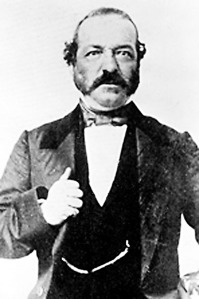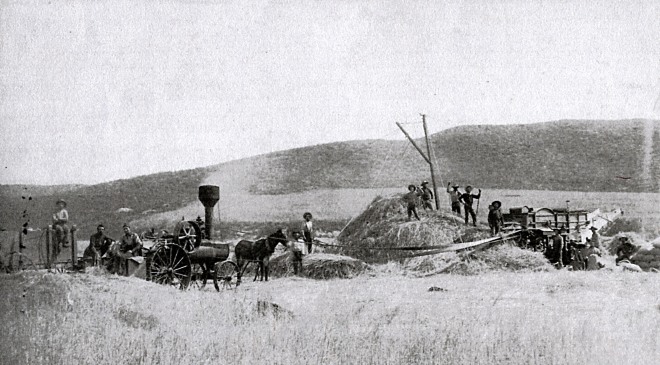Andres Pico, circa 1846
Time can bring many changes. Especially when the time includes wars between neighboring nations.
Andres Pico is probably best known in San Diego history as the commander of the Californios against American troops at the Battle of San Pasqual, the bloodiest battle of the Mexican-American War. The battle is still re-enacted here every year and some controversy still swirls over who really won it and which army had the better leader, although most accounts give the edge to Pico.
The battle may still be disputed but the war of course was won by the USA, bringing California under the American flag in 1848. And how many know what became of Andres Pico after that?
In 1849 Pico was among those selected as a delegate to the California Constitutional Convention. Two years later, in 1851, he won election to the state assembly.
His old adversaries clearly recognized his military prowess, because in 1858 he was appointed a Brigadier General in the California State Militia. But Pico proved as adept at politics as he did on the battlefield.
By 1860 he was serving in the state senate from the San Fernando area of Los Angeles. A rundown of state senate business in the Los Angeles Star on February 4, 1860, included this item: “On motion of Mr. Peachy, Don Andres Pico was added to the Committee on Hospitals.”
In April of 1860, the same newspaper, reporting on a bill to re-organize the city’s government pushed through the state assembly with little opportunity for local input, wrote that “Our citizens are much indebted to their Senator, the Hon. Andres Pico, for his watchful care of their interests and his desire to consult their wishes, manifested by forwarding a copy of the bill to this city, and delaying its passage in the Senate until he could hear from his constituency.”
Pico was elected as a Democrat, and was considered a “Buchanan Democrat” as the national party split over the issue of slavery. But two months after Fort Sumter, when he was asked by federal officials to clearly define his stance in the war, Pico declared that he respected “the Constitution and the Union entire, to maintain which I would cheerfully offer as a soldier, my sword, and as a citizen, my fortune.”
When the federal government moved to recruit a battalion of “Native Cavalry” from California for the Union Army, Pico was offered the command. Ill health forced him to turn it down, but he became an important recruiter and fundraiser for the unit which ultimately helped to prevent Confederate incursions into New Mexico and Arizona.
When Andres Pico died in 1876 his funeral was described in the Los Angeles Herald as “one of the most imposing ever seen in this city,” with “fifty carriages and at least a hundred sincere mourners on foot” following his casket, and pall bearers that included the governor of California and the mayor of Los Angeles.
_____________________
Sources for this post included historic Los Angeles newspapers, the website of the San Fernando Valley Historical Society, the essay, “California Soldiers in the Civil War,” by Leo Kibby, from the California Historical Society Quarterly, and the book, The Decline of the Californios, by Leonard Pitt.
Get Updates Automatically-Become A Follower of the San Diego History Seeker
You can get weekly updates of San Diego History Seeker automatically in your email by clicking on the “Follow” button in the lower right corner of the blog page. You’ll then get an email asking you to confirm. Once you confirm you’ll be an active follower.




